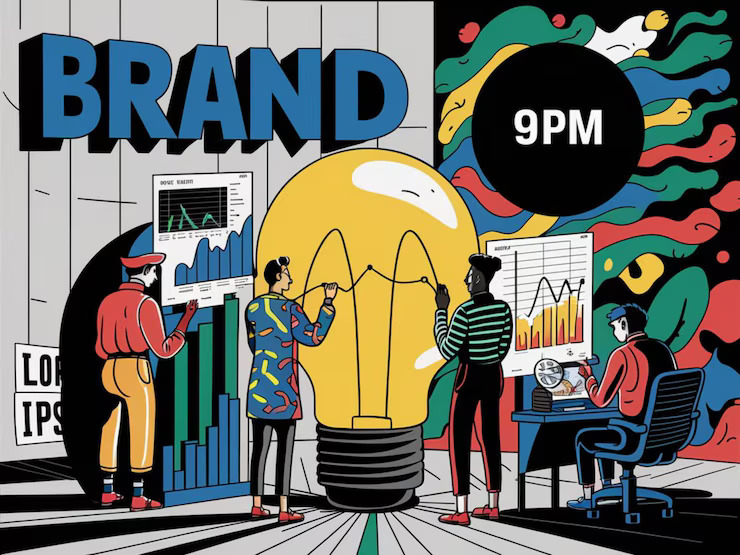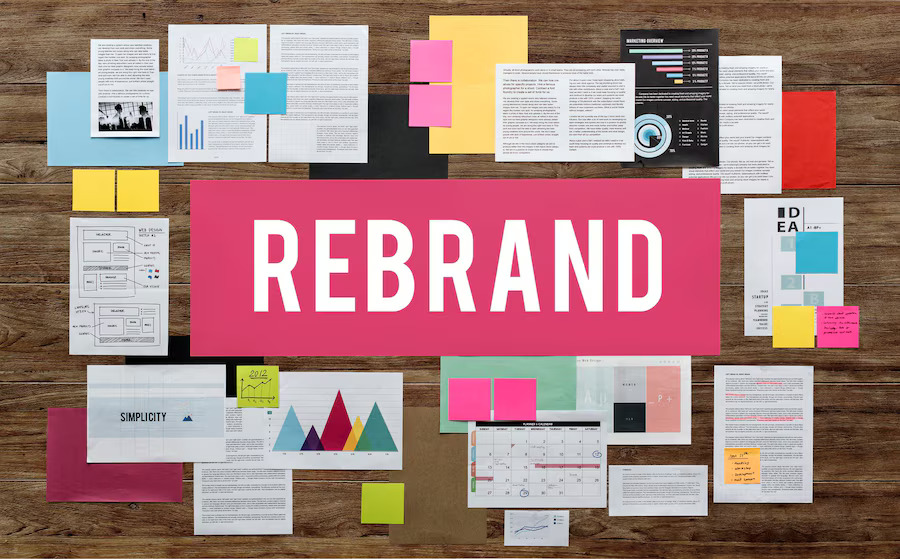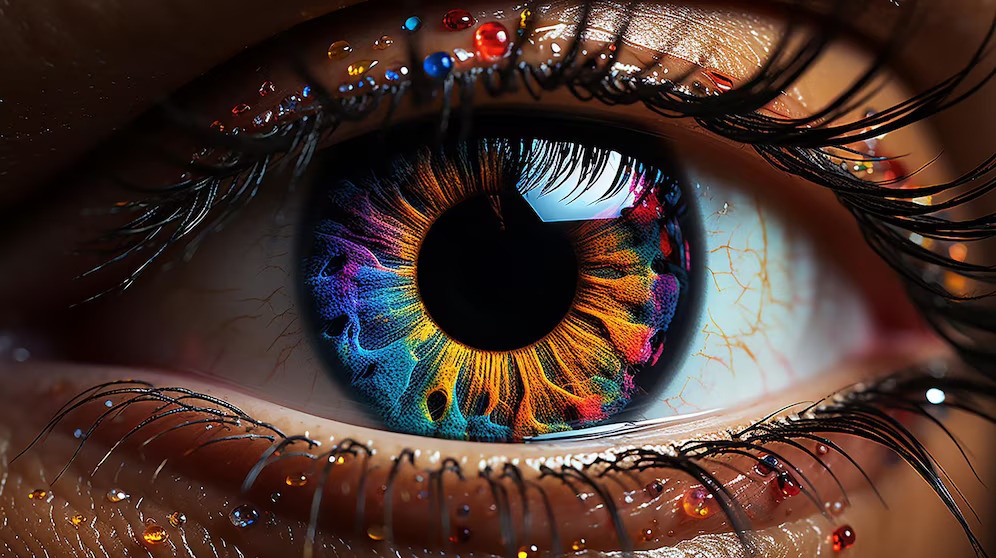
Branding is the key to your brand’s success. It differentiates your brand from competitors and provides a unique arch to stand out among the sea of businesses.
Different types of branding can be incorporated into your business to formulate unique tactics to boost your brand’s visibility, loyalty, and reputation.
Let’s explore what are the types of branding, their benefits, and their use in your industry.
Types Of Branding
Different types of brands use different branding strategies. Let’s discuss the types of branding with examples.
1. Corporate Branding
Corporate branding involves focusing on the business as a whole rather than one element. It is crucial to a business’s reputation. It provides a unique selling point and value for the business and represents its value proposition.
Corporate branding enhances marketing and sales, the hiring experience, and the ability to find better partnerships and investors. It also creates guidelines for communication between customers and the business.
A famous example of corporate branding is Starbucks, which has a specific ambiance, the same taste and service, and has collaborated with many brands.
2. Product Branding
As the opposite of cooperative branding, product branding focuses on one product rather than the whole business. It can be done for a single product line instead of one product.
The best way to brand a product is to conduct a competitive analysis to understand the competition better, explore and identify the problem, and resolve it.
This will engage your customers and make them trust you because of your problem-solving approach.
A famous example of product branding is Coca-Cola. Although the beverage company has many other products, its most renowned product is the Coca-Cola soft drink, which has given the brand popularity.
3. Retail Branding
Retail branding is a relatively rare approach to branding. In this, we gather all the different products under a single roof and explore ways to market them by focusing on sellers rather than products.
Also, through retail branding, you build a positive perception of the brand and customers that deliberately evoke positive feelings in their hearts.
It allows the seller to market products from different and multiple manufacturers as their own. The motto is to sell the product and encourage people to shop at your store.
A famous example of retail branding is Nike’s use of Michael Jordan to promote its shoes and raise a generation of sneakers lovers.
4. Geographical Branding

This type of branding tickles your customers’ feelings of belonging. There are two ways of geographical branding.
One is having a famous product in your region or that has become people’s favorite, so they market themselves as “best liked by the locals.”
The second type is when you associate your brand with a famous geographical region or spot to show that this specific brand is famous there or will remind you of this city.
A famous example of geographical branding is Bath and Body Works’ limited edition Paris-inspired body mists.
5. Service Branding
It is similar to product branding, but the highlighted difference is that we brand a service rather than a product in service branding. It focuses on services provided by a company or an individual that could help you perform specific tasks.
A famous example of service branding is our SEO guy, Neil Patel. He is renowned for his unique SEO approach and has guided millions of people in his field.
6. Online Branding
Online branding is marketing your brand using social media, websites, and other means of social interactions. It has details like specific website designs, styles, email marketing campaigns, and domain names.
Through this branding tactic, you can create an interactive social presence, introduce new challenges or trends to excite people, and post engaging content to keep the customer hooked.
A famous example of online branding is again Starbucks. One of their best tactics is consciously writing the wrong spelling of the customer’s name so the customer can click a picture of it and post it on their social handle, which gets Starbucks free marketing.
7. Offline Marketing
Even though we live in the digital era, offline marketing still hugely impacts us. We see hundreds of billboards, pamphlets, posters, exhibitions, stalls and decorations.
It includes merchandise, packaging, printed ads, bus and subways, benches, pop-up sales, and contest centers. While online marketing only involves one sense, offline marketing incorporates all five senses and better captures the audience.
An example of offline branding is the newly introduced Rhode Beauty’s photo booth in LA and Miami and their famous Rhodes phone covers.
8. Co-Branding

Co-branding occurs when two companies develop a product and market it together. This type of branding is the most powerful because it has twice the audience, strategies, and market.
Co-branding can benefit both brands. Collaboration between two brands can create massive hype and blow the audience away. Famous examples of co-branding are Adidas and Kanye, Uber and Spotify, Fenty Beauty x Heytea, and Jacobs and Co x Bugatti.
9. Ingredient Branding
Ingredient marketing refers to marketing a specific ingredient in your products that makes them unique from the other products available.
The whole marketing tactic is to seek a high-quality ingredient that makes your product more efficient and different from its competitors.
A famous example is Advil, a brand name for ibuprofen. It is the same as other brands, but people prefer Advil because they perceive it to be better; however, it is not.
10. Conscious Branding
It is also called eco-retail branding, in which a brand or product is created to reduce environmental waste and be more environmentally conscious.
This brand or product is known for its ecological impact, and people use it to do good for the environment.
A famous example of conscious branding is Liquid Death. They use aluminum cans instead of plastic bottles, and people buy their products because of that.
11. Debranding
Debranding is when the company removes its name or logo from the product to make it look more personal, similar to the audience, and less to the cooperation.
It is done to cut advertising costs and form a personal bond with the audience and less with the company so the audience feels safe and belongs to the product.
Another intention for debranding is to make the product highlight rather than the brand or company that owns the brand. A famous example of debranding is Nike’s swoosh.
12. Rebranding

Rebranding is reintroducing a product or brand after debranding it to excite the audience and engage them with its newly acquired characteristics.
Rebranding is a great tactic because it jogs the memory of loyal customers and pushes them to buy the new product without inspecting much.
Famous examples of rebranding are Instagram and Twitter, now known as X.
13. Disruptive Branding
This company challenges its previous modes of advertising and establishes different ways of branding and marketing a product.
This strategy alters the public’s perception of the company or its products and builds a new customer relationship.
Various brands also use this strategy as damage control because it introduces a new concept and discards previous experiences.
A famous example is when PepsiCo fought a lawsuit in which a customer claimed to have a mouse in their Mountain Dew can/ bottle. Pepsi claimed that the chemicals in their soft drink easily dissolve the mouse, so there can be no mouse in the bottle.
Later, they introduced new bottles of Mountain Dew to compensate for the shame and damage they faced because of this case.
14. Innovate Branding
Innovate branding involves interactive ways of branding a product so the customer engages with the product.
In this era of social media, many companies introduce new trends to boost their marketing game. This way, customers engage in the campaigns and buy products to stay relevant on social media platforms.
A famous example of innovative branding is Netflix. Just before every show, Netflix introduces new trends related to the show. For instance, everyone started dressing and promoting early European culture before Bridgeton.
15. Value Branding
Value branding focuses on the customer’s needs and requirements. They address the customer’s expectations and requirements to show their loyalty and care for their customers.
It builds a relationship of trust, love, dependability, and value between the customer and the brand.
A famous example of value branding would be grocery stores promoting or selling their product at a low cost compared to their competition for their customers.
16. Performance Branding

Performance branding refers to offering products that provide a high-quality experience. It characterizes the product’s performance to marketers, including dependability, efficiency, and consistency.
It builds trust among the customers and the brand. It also helps the brand to engage the customers into buying their product.
A famous example of performance branding is automobile companies marketing the quality of tires to make customers trust them, and Loreal Paris Revitalift filler 100% Hyaluronic acid serum.
17. Luxury Branding
It focuses on the exclusivity or high quality of the product or service. It expresses the rarity, extraordinary quality, expensiveness, and limited brand availability.
Famous examples of luxury branding are the limited edition Gucci and Prada bags or the generationally hyped Birkin bags by Hermes.
18. Style Branding
It focuses on how the product feels and looks. Strategy elevates the product’s looks over its performance.
Endorses a creative and contemporary perspective to embrace a tone to market the brand. A famous example of style branding is EBC’s high heel-shaped perfume range.
19. Experience Branding
Marketers use customers’ experiences and feelings to promote products. This shows the customer’s interactions with the specific product or place.
A famous example of experience branding is Rare Beauty, Rhodes, where the founder shares their customers’ experience and introduces every product by using it themselves.
20. Individual Branding

In individual branding, the person brands themselves and the services they provide, like a freelancer, solopreneur, or a celebrity.
Author Ana Huang, Collen Hoover, Elif Shafaq, and Toshikazu Kawaguchi are famous examples of individual branding.
21. Group Branding
Group branding involves promoting a group instead of a person. BTS and Black Pink are famous examples of group branding.
22. Event Branding
Event branding involves branding an event, not a product or a company. Coachella is a renowned example of event branding.
23. Influencer Branding
The company hires an influencer or a bunch to market their product using this approach. Many beauty companies use this approach as influencers are shortcuts to people’s mobile screens.
A famous example of influencer marketing is Loreal Paris, which advertises its products through influencers and promotes the influencers at well-known events like the Met Gala and Cannes.
24. Visual Branding

Visual branding involves creating highly interactive visuals that captivate the audience. Glossier and Oatly are famous examples of this.
These are the top 24 types of branding; others are family branding, umbrella branding, white label branding, and media branding.
Conclusion
Branding is crafting a brand identity by incorporating unique designs and meaningful elements to set your business apart. Branding is dependent on the brand’s type.
Marketing merges the brand’s value and position, helping maintain brand consistency and building trust between the company and the customer.
You can incorporate different branding techniques and merge them to elevate your brand’s visibility and boost your sales with infinite customers.
Explore More:

Vince Logo Design is a distinguished digital marketing agency, specializing in crafting compelling brand identities and optimizing online presence. We are your partners in creating impactful digital strategies that drive results.
Get in touch.Get Free Consultancy
Fill the following form and receive a guaranteed response within 48 hours.
We have worked with world's leading brands











